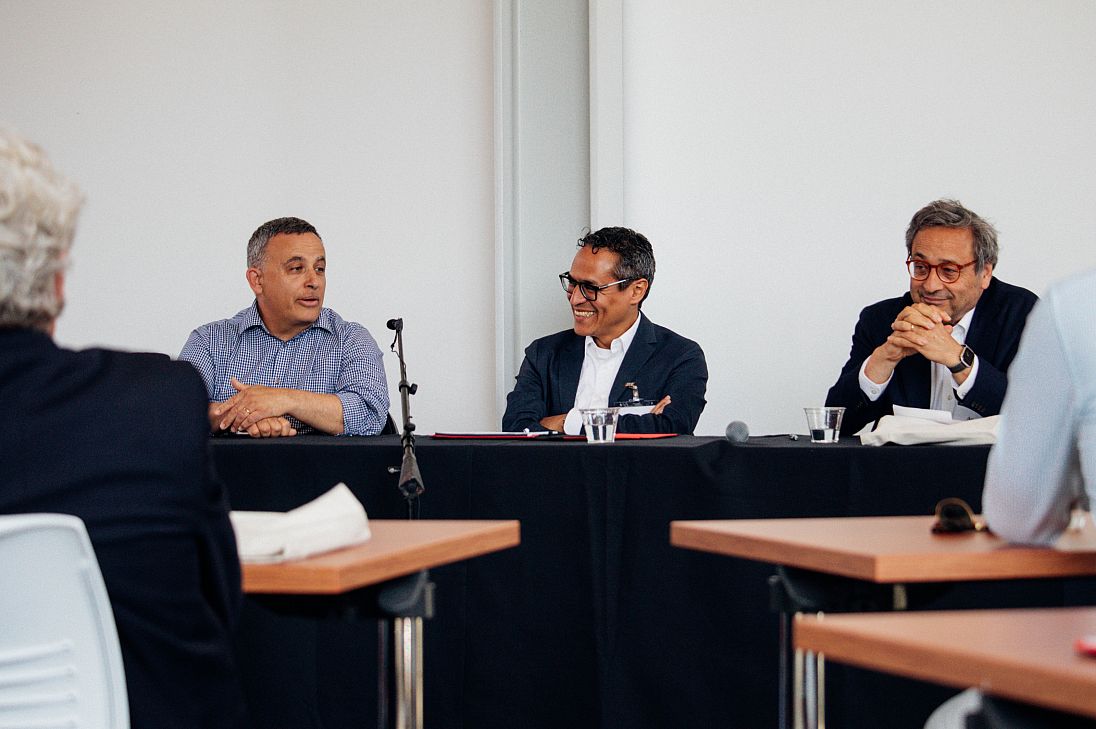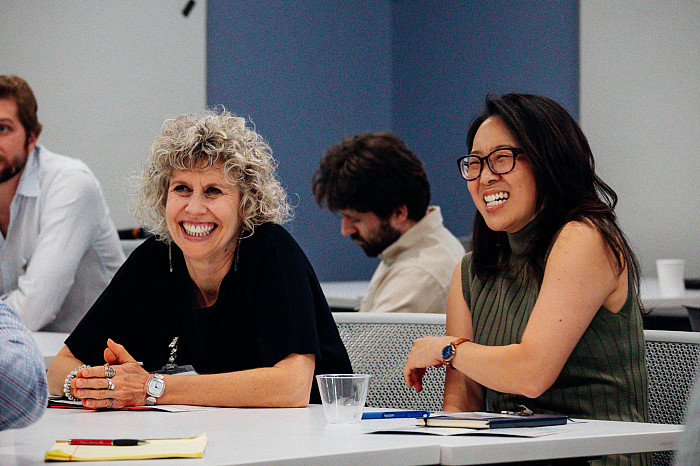Revolutionizing the Liberal Arts
Fittingly, at the birthplace of the Common Intellectual Experience—where students engage in an undergraduate learning experience driven by four enduring questions—some of the nation’s foremost innovators of the liberal arts gathered to ponder and posit the biggest question: the future of liberal education.
“This is our time if there ever was one,” said Paul Stern, a professor of politics at Ursinus College and a co-organizer of the inaugural Revolutions in Liberal Education colloquium, which took place on the Ursinus campus on June 1 and June 2. “Our aim here is to face the challenges to the liberal arts with the clearest possible understanding.”
Founded by a Teagle Cornerstone Grant, the colloquium brought together 40 faculty and administrators from Ursinus and other institutions “to reinvigorate liberal education in the face of the numerous challenges…it currently confronts.” It began with a roundtable discussion, moderated by Stern, between Ursinus Professor of Politics Jonathan Marks; Teagle Foundation President Andrew Delbanco; and Columbia University scholar Roosevelt Montás.
Montás, who delivered the keynote address at Ursinus’s 2023 commencement ceremony, is one of the nation’s biggest advocates of the liberal arts. He said, “Universities and colleges are becoming more and more like centers for career preparation, which is, of course, a necessary function. That aspect tends to dominate discussion because it’s easy to measure. But liberal education will instill, cultivate, and nourish the qualities distinctive of a flourishing life—a self-reflectiveness and self-awareness that is inescapable and necessary.”
Delbanco, currently the Alexander Hamilton Professor of American Studies at Columbia, noted three characteristics of a liberal education that emerged as overarching themes of the panel discussion: humility, character, and complexity.
“Liberal education can be valuable for people in all phases of life, in all circumstances,” Delbanco said. “It seems to me that one mark of an educated person is to recognize that any question where there’s something significant at stake is complicated—that there will be multiple perspectives on that question with varying degrees of legitimacy. And that there is no simple answer to any question. Trying to get our students comfortable with complexity, and with being skeptical of simple-minded answers to complicated questions, is an enormously important project to which I think every institution of higher learning should be committed.”
On the second day of the colloquium, participants dove into defining the goals of the liberal arts and the challenges of communicating their value to parents and prospective students. Wendy Fischman, director of the Harvard Graduate School of Education’s Project Zero, said that among populations she’s surveyed, 60 percent of first-year students, 50 percent of graduating students, and 60 percent of parents of young alumni struggled to define liberal education.
“We need to think about messaging and how institutions are conveying liberal education. We need to make sure our goals are explicit,” she said.
Fischman talked about “higher education capital,” or “HEDCAP,” which is one of the foundations of her research and measures how well colleges are serving their purpose, as well as how well students talk about college and their experiences. Students who view higher education as transactional tend to have lower HEDCAP scores, but students who view it as transformational score higher. Fischman is trying to help schools identify just what students are getting out of their experience.
“How can we bridge the misalignment between what today’s students and parents want and expect from higher education and what faculty and administrators want to achieve?” she asked.
“It’s a long-term transformation,” Ursinus Professor of Religious Studies Nathan Rein said. “I look for students to take joy in the empowering experience of understanding things they didn’t understand before. Students come to us thinking that their opinions won’t ever matter—that they don’t carry much weight. But that begins to change here when they invest in their own thought processes and convictions.”
Joseph Bagnoli, vice president for enrollment at Grinnell College in Iowa, led a session about external obstacles that challenge the mission of the liberal arts. He said, “We need to advance a unified message of liberal education that helps us tell a common narrative. We don’t have one. We need one.”
“I think it’s particularly important to examine what is discouraging students from the possibility of applying and attending and then figuring out how high is that challenge,” Bagnoli said. “And what do we have to do as an institution—that is still very much true to ourselves our mission—to bring them past that barrier?”
The colloquium closed with a discussion moderated by Ursinus professors Sheryl Goodman and Doron Taussig on what more liberal arts institutions can do in the face of challenges.
“Ursinus has long been viewed as an innovator of the liberal arts, and I’m proud to host this colloquium and prompt such insightful discussion on finding the solutions to the challenges we face today,” Ursinus President Robyn Hannigan said.
For more colloquium coverage, read Will Bunch’s column in The Philadelphia Inquirer here.

